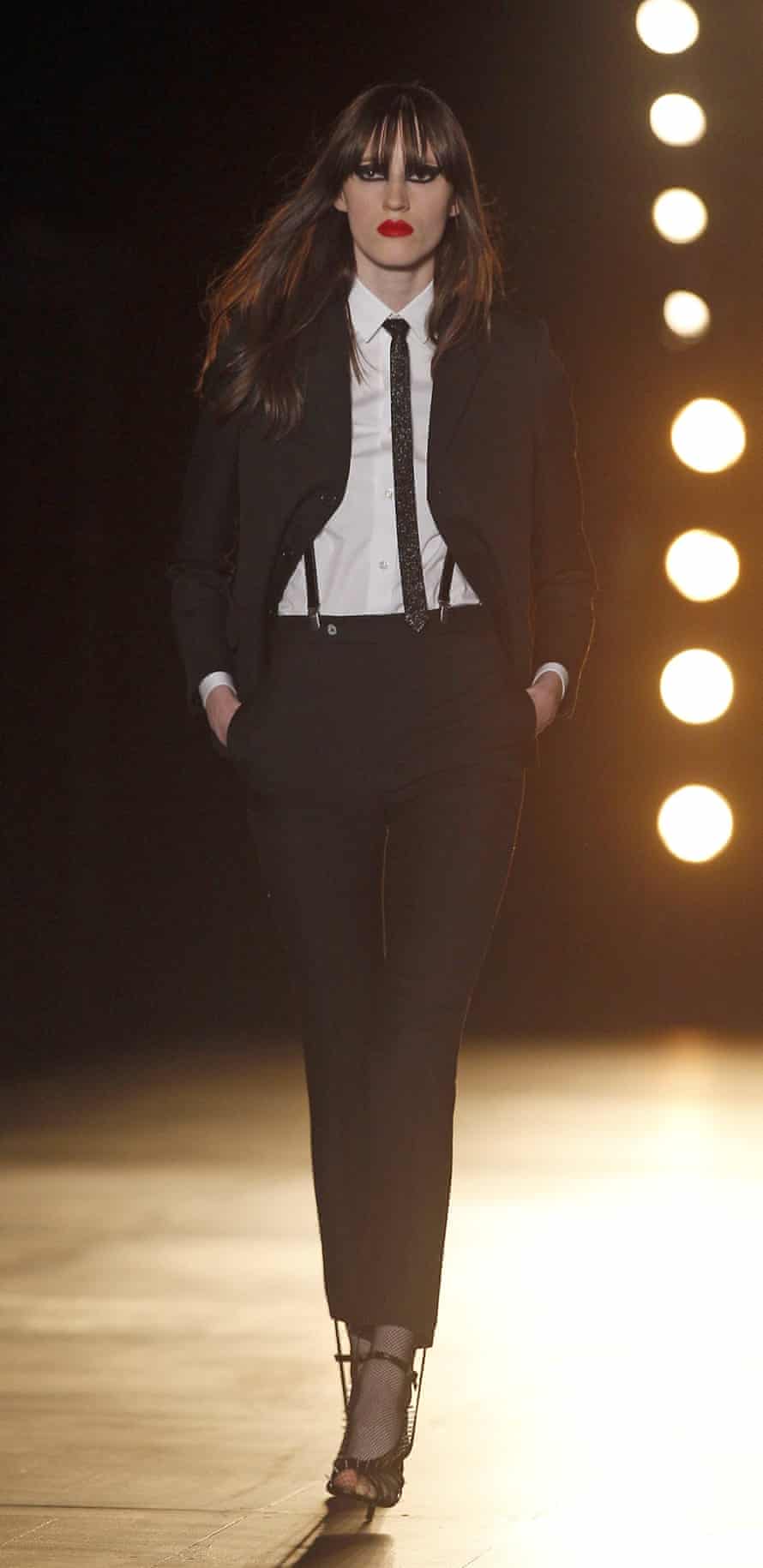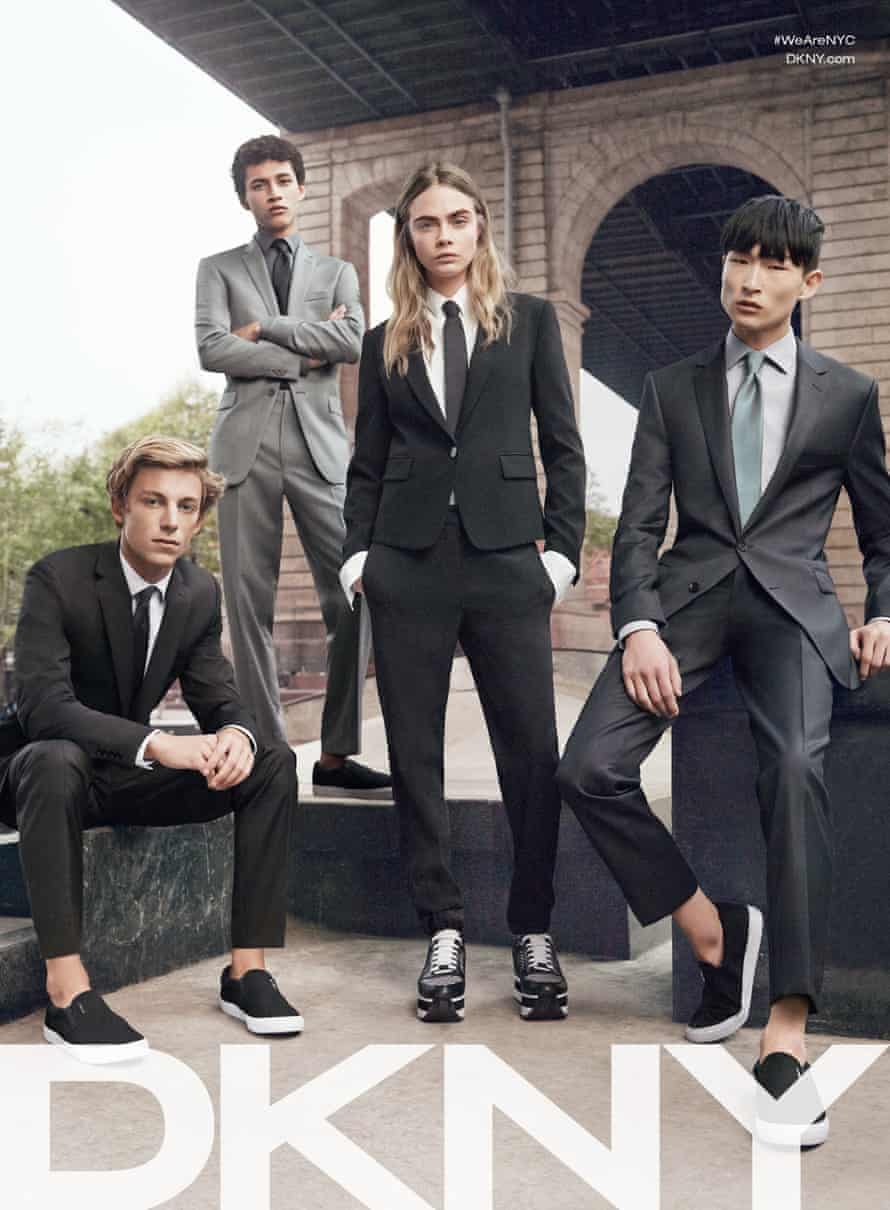Why Do I Like Androgynous Fashion but I'm Straight
I n next month'south US Vogue, player Ellen Page explains in newsworthy fashion why coming out has rekindled her love of fashion: "I used to feel this constant pressure to exist more feminine," she explains, calculation: "You need to wear a wearing apparel or people will think you're gay … At present I feel a sense of freedom in dressing."
Page is far from the first gay woman to discover new-establish sartorial freedom after coming out. Though I realised I was into girls at around four, it took until 14 to come up out, and so 17 to tell my mum. I recall she must have realised when I started cutting my pilus (with a razor, in the shower) to make my hair similar Shane's from The L Give-and-take. "Don't you want boys to like you?" she asked. And now I wonder, similar Folio, how many women – directly or not – would benefit from never having to consider what a man – real or imagined – thought of their clothes.
Afterwards coming out, excluding time spent at uni in the mid-noughties' ubiquitous cut-off denim skirts, I've stuck to outfits a bloke could wearable without being heckled – and which I call butch chic. To me, butch chic is printed shirts without frills and skirts without peplums or lace – or whatever of those things that look pretty, or pretty uncomfortable depending how you look at it. Functionality takes precedence, with elements taken from queer-friendly subcultures: punkishly torn vests, riot grrrl boots, hip-hop's baggy T-shirts and grungey jumpers. What's more, most gay women I know apparel using elements of the above; information technology's not only a uniform, but a Freemason's handshake. It's how we could tell the queer from the straight. So it's no surprise that Ellen Page prefers a Saint Laurent accommodate to a pretty dress.
It used to act as code for your sexuality simply at present things have inverse. News that the biggest trend of the flavour is unisex – which, permit'due south face up it, draws on some of the things I've mentioned, perhaps with a cleaner cut – has complicated things. From gender-neutral style at JW Anderson to unisex shopping areas at Selfridges to next flavor's Saint Laurent collection, what was once a queer-owned style has shifted to the mainstream, being appropriated by straight women to the point that it's now impossible to infer a sexual orientation from the way a woman dresses.

Manifestly information technology'southward fine. I'chiliad not one to tell directly women to dress straight and vice versa, but information technology's certainly having an impact on gay women. What was one time lesbian code is at present merely on-tendency, thanks to the high-street ubiquity of unisex outfitters such as American Apparel and Uniqlo and the androgynous cuts of Scandinavian shops like Cos. Add to that the ascent of gender-free accessories (Grenson shoes, beautiful and well-nigh indistinguishable between genders). Some women are shirking the "young man" cut for bodily men's clothes, something we gay women have been doing for years.
Glory influence has also helped, from the e'er-quirky Tilda Swinton to the more tabloid-friendly, youth-appealing sorts such as Cara Delevingne, who'southward fronting this flavour's DKNY campaign in suits and tees. Even Emma Stone, who happens to exist straight, prefers to put a little subtle butchness into her off-duty looks, dressing like a cross between Kristen Stewart and preppy Taylor Swift. As for singers Jessie Ware and Lorde, both are styled by Avigail Claire – who just knows how a monochrome masculine cut works on a feminine physique.

Stepping outside of sexuality, it'south an interesting shift for fashion. If lesbians and bisexual women dress butch, it's non necessarily considering they want to exist boys, or deliberately to peacock for other women. They're doing it because they don't necessarily aspire to a supposed male ideal of what looks beautiful; they're more interested in wearing what'southward most comfortable to them, that or emulate 'out' model Freja Beha Erichsen in blackness tees, black jeans and biker jackets.

For me, it's a question of comfort and a lack of fear of existence judged for "looking like a lesbian", considering, well, I kind of am. That'due south why I beloved labels such as Wildfang, an American visitor that makes men'due south clothes in female cuts for "tomboys". It's a women-ready menswear delight.
Information technology's dainty to fall, accidentally, into fashion, but I also miss the exclusivity of what nosotros wore. It's not only going to be harder for lesbians to pull, now that every adult female is wearing these signposts of queer, but I'thou a flake proud of looking like a 'dyke in those jeans'. Information technology'south not the insult yous'd presume; one friend jokingly identifies not as gay or queer, merely every bit 'Carhartt'. And that pride in setting yourself apart, in wilfully doing something that will never ever be done for the pleasance of a bloke, is kind of liberating.
0 Response to "Why Do I Like Androgynous Fashion but I'm Straight"
Post a Comment